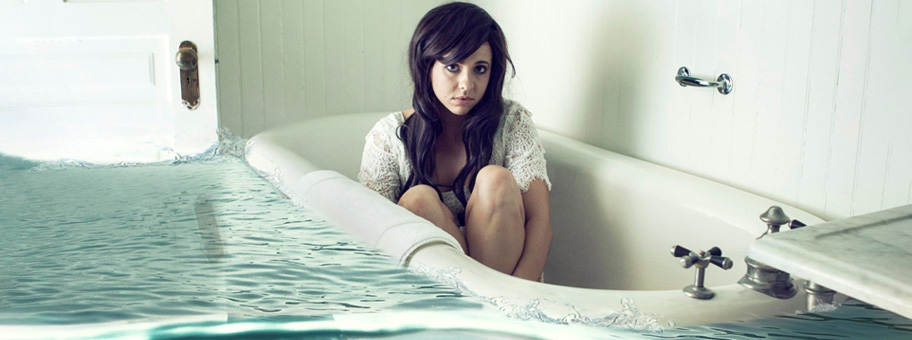ATTENTION! At 00:00 the MTIBU database will be updated. Please start concluding the contract after 00:00

28.02.2018
2389
Let's be frank - in Ukraine, the issue of personal property insurance, in particular - apartments, is far from the first place in the minds of ordinary citizens.
However, it is absolutely in vain. Given the socio-economic level of development of society as a whole, for many of our compatriots, private housing is often a key, if not the only asset from real estate. And it should be treated with due attention.
However, one decision to insure your home may not be enough if you do not take into account a number of subtle points related to this insurance product. This is the topic this column is devoted to.
Let's start with the fact that apartment insurance can be considered in the context of two components: insurance of personal property itself and insurance of liability to third parties, namely - neighbors.
First, let's consider the first component. In this context, it is possible to insure both the apartment box itself (including, of course, integral communications and finishing), and its contents: furniture, appliances, personal belongings.
Both are usually insured against the same set of external risks.
The main ones are fire, explosion, natural disasters, breakdown of communication systems and illegal actions of third parties.
At the same time, the fall of aircraft and the collision of vehicles are also worth considering, especially if the apartment is located on the first or last floors.
Insurance practice knows a lot of seemingly unheard-of examples when the very risk that was neglected when concluding the insurance contract "triggered".
The second important point is the determination of the insured amount. When it comes to real estate, everything is quite simple. You won't go wrong if you take two parameters as a basis:
Before signing the insurance contract, be sure to inform the insurer of all the nuances you know.
For example, about improperly executed redevelopment of the apartment, or the history of insured events in the last three to five years.
It is also worth noting that the insurance policy, as a rule, excludes losses caused by construction and installation work, even if the neighbors started the repairs.
In this case, it is better to buy an additional option for a troubled period, under which you can still receive compensation within a certain limit if the neighbors' repairs affect your apartment.
Everything is much more complicated with contents insurance. Unlike legal entities, whose fixed assets are recorded on the balance sheet, the values of individuals are not subject to any documentary accounting. Therefore, I will say right away - get rid of illusions.
At the moment, despite the large number of "box" products designed for quick and inexpensive insurance of personal housing, there is not one that would fully cover the entire contents of apartments, especially - personal belongings.
But if you approach the issue meticulously and correctly, you can still get the most complete insurance protection from the available options.
The main thing - take a couple of days to think over and make an exhaustive list of the valuables that you want to insure. Name the furniture items as precisely as possible, indicate their quantity and manufacturer.
When describing household and digital appliances, be sure to specify the make, model, year of manufacture and brand. The cost of each unit should be equal to the market price for the same goods. Therefore, if you have been insured for several years, you should review them before each renewal of the contract.
Do not forget that by default, money, jewelry, fur products and art objects are excluded from insurance coverage. Their inclusion in the policy should be agreed with the insurer on separate terms. Be prepared for the fact that you will be asked to take a photo of each valuable item, for art objects - to provide an estimate, and money and jewelry will be required to be stored in a safe, because only in this case they will be considered insured.
Clothes, shoes and accessories deserve special attention. As a rule, they are not accepted for insurance at all. There is a completely logical explanation for this. Firstly, only the most desperate policyholders are willing to take a photo and attach a list of their entire wardrobe to the contract. And secondly, in cases of total loss, it is practically impossible to assess the condition of the damaged item.
Another nuance is that often in the event of damage, difficulties arise related to the provision of documents confirming the value of movable property. Therefore, before signing the contract, it is critical to discuss with the insurer which checks and receipts have been saved and which can be painlessly dispensed with.
The second component in the context of apartment insurance is third-party liability insurance. It is insured in order to protect yourself from the costs associated with compensation for damage that occurred in the apartment, but affected the neighbors.
The most common troubles include a communication breakdown, a gas explosion and, of course, a fire.
When choosing the desired liability limit, that is, the maximum amount of compensation that you expect to receive from the insurer in the event of damage, it is important to pay attention to the quality of repairs of the apartments adjacent on all sides. The higher it is, the higher the limit should be.
If the apartment is rented to tenants, then it makes sense to extend the contract to damage caused by them, since the neighbors will come to you with claims anyway.
In conclusion, I would like to note that all of the above recommendations, even despite their laboriousness and complexity, are quite feasible. From personal experience, I will say – I approached the insurance of my apartment with all seriousness and spent two weeks concluding an insurance contract. After all, it is more important that the contract “works” at the right moment, isn’t it?
Source: Finance.ua
Author: Olena Dzyuba (specialist of the property insurance department of BritMark)



































































































